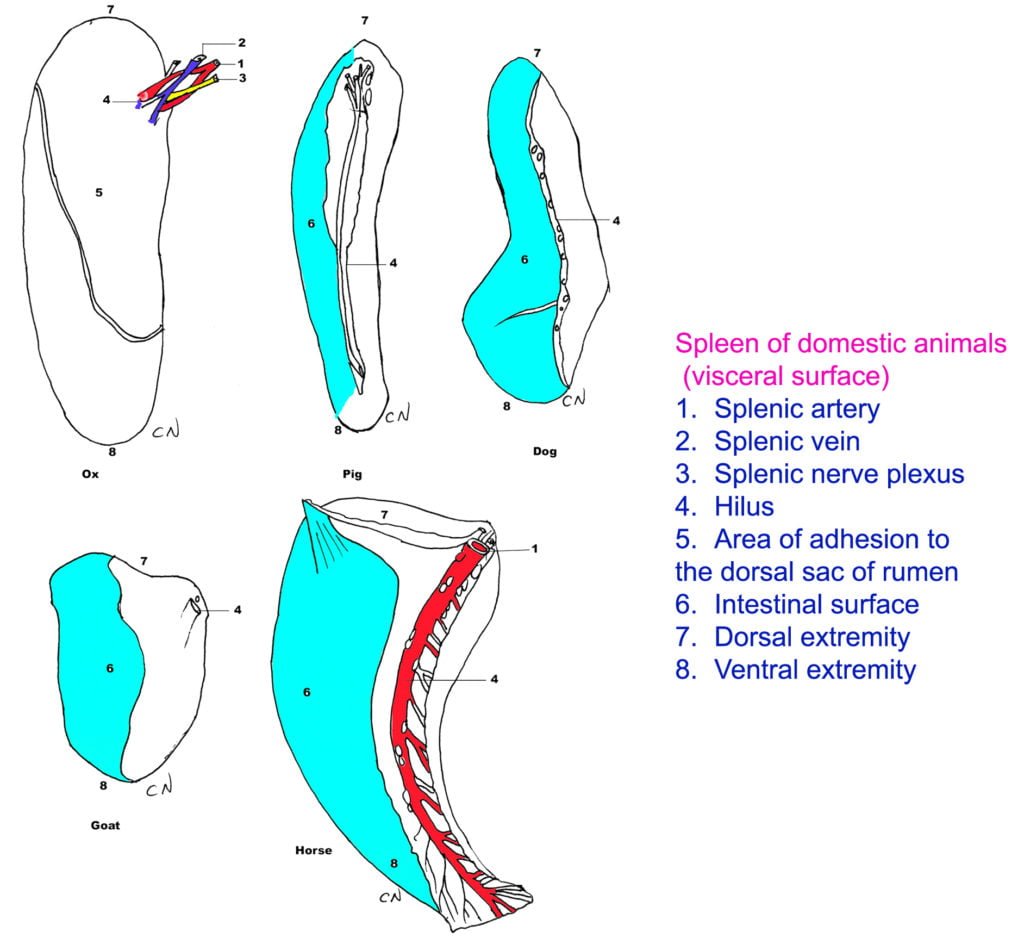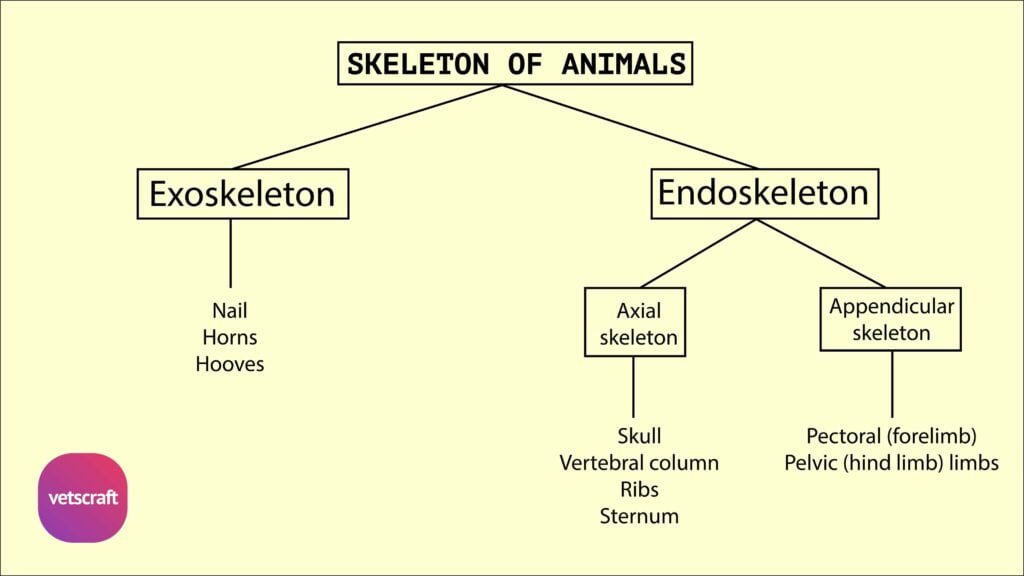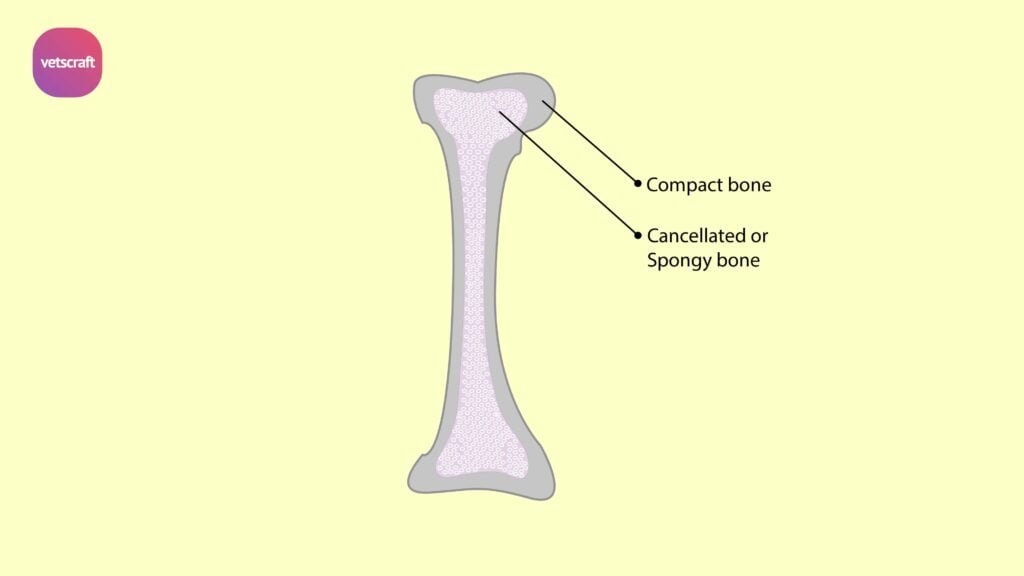TABLE OF CONTENTS
Spleen of Animals
The spleen of animals is the largest of the lymphoid organs.

Spleen of Ox
Spleen of Ox is the largest of the lymphoid organs, situated on the left face of the rumen and elliptical in outline. It is bluish-red or purple in colour and measures about 50 cm long and 15 cm broad and weighs about 900 gms. It presents two surfaces, two borders and two extremities.
The parietal surface is convex and is applied against the diaphragm. It presents a narrow, angular, elongated area in the upper part, close to the cranial border without peritoneal covering and directly adherent to the diaphragm.
The visceral surface is concave and is related chiefly to left side of the rumen and a narrow adjacent area of the reticulum. About one half of the visceral surface in front is attached to the rumen and is denuded of peritoneal covering.
The hilusis situated on the dorsal third of the visceral surface nearer the cranial border. The dorsal extremity lies under the dorsal ends of the last two ribs. The ventral extremity is opposite the 8th or 9th rib about a hand’s breadth above its sternal end.
Spleen of Sheep and Goat
Spleen of sheep and goat is oyster shell-shaped or triangular approximately. The wider end or base is dorsal. Long axis is oblique and corresponds to a line drawn from the vertebral end of the last rib to about the 10th intercostal space
The dorsal end is attached to the left crus of the diaphragm under last two ribs. The hilus is on the visceral surface as a round depression. The ventral end is thinner and situated opposite to the 11th rib.
Spleen of Horse
Spleen of Horse is situated in the left parachondriac region on the left part of the greater curvature of the stomach. It is scythe shaped. It weighs about 1 kg. The parietal surface is convex and is related to diaphragm.
The visceral surface is concave and presents a ridge, which divides this face into unequal areas. The hilus is on a groove situated on the ridge. The area in front of this ridge is the gastric impression and behind the ridge is the colic impression left by parts of colon. The cranial border is concave whereas the caudal is convex. The base is beveled and presents the renal impression.
Spleen of Pig
Long and narrow extends dorso-ventrally along the left part of the greater curvature of the stomach. The dorsal end is smooth and convex and lies under the vertebral ends of the last three ribs.
The parietal surface is smooth and convex of spleen of pig. The visceral surface is concave and presents a longitudinal ridge on which the hilus is situated. This divides the surface into nearly equal gastric and intestinal areas, which are in contact with the stomach and colon respectively
Spleen of Dog
The spleen of dog is bright red in colour and weighs 50 gm. It is falciform, long and narrow. It is roughly human- foot print shaped structure. Its dorsal end is narrower and is ventral to the vertebral end of the last rib and first lumbar transverse process. The ventral end is wider and is variable in position.
Spleen of Cat
Spleen is spear shaped in Cat.
Spleen of Rabbit
Spleen of Rabbit is elongated and spatula shaped structure. Dark brown in colour. Proximal end is pointed and the distal end is blunt. Cranial border is convex and the caudal border is irregular. It is extended dorso-ventrally along the greater curvature of the stomach.
Spleen of Fowl
The spleen of fowl is a reddish brown, rounded body situated dorsally and to the right of the junction of the proventriculus and gizzard. Accessory spleens are also noticed.

